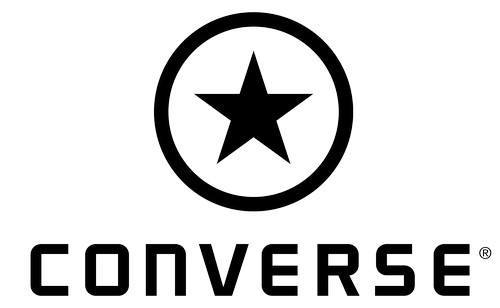The Marketing mix of Converse analyses the 4Ps of Converse, which includes the Product, Price, Place, and Promotion of Converse. Converse is one of the iconic companies that primarily deals in footwear and other products. It is of American origins and was founded in 1908 by its founder, Marquis Mills Converse. The company is headquartered base in Boston and serves a global area. In 2003, it became a subsidiary of its parent company Nike, Inc.
Products are manufactured under several trade names like Jack Purcell, John Varvatos, Chuck Taylor All-Star, and Cons. Converse has targeted women, children, and men as its target customers, but its particular emphasis has always been on youngsters and players. Some of its leading rival companies are as follows-
- Adidas
- K-Swiss
- Vans
- Reebok
- Puma
About Converse
- Type: an American lifestyle brand
- Industry: Footwear, apparel, and accessories
- Founded: 1908, by Marquis Mills Converse
- Headquarters: Boston, Massachusetts, United States
- Area served: Worldwide
- Current CEO: G. Scott Uzzell
- Number of employees: 11,000
- Major products: Chuck Taylor All-Stars, Cons, Jack Purcell, One Star, and Star Chevron
Table of Contents
Converse Product Strategy
Converse is all about individuality, and its company has created memorable product lines for people belonging to several communities, including skateboarders, artists, teenagers, basketball players, and others. It is a manufacturer, designer, and marketer of high-quality qualitative footwear for women, men, and kids.
The company’s production output includes Lifestyle-brand footwear, skating shoes, and apparel. Critical distinguishing features of Converse shoes are its wrap-around strip, smooth rounded top, unique rubber sole, and star symbol. At the company’s onset, it was a manufacturer of rubber shoes, but later, in 1915, it started producing athletic shoes, especially for tennis players.
In 1917, Converse introduced the All-Star Basketball footwear line, which proved to be a milestone. During 2nd World War, Converse started producing rubberized footwear, protective suits, and outerwear for the military. Over the years, Converse shoes have launched several special editions like The Ramones, The Clash, Drew Brophy, Pink Floyd, Nirvana, and Black Sabbath.
Converse is a well-known American shoe company primarily known for its athletic and casual footwear range.
The new Product Mix of Converse in 2023 is as follows (Source).
- Sneakers: This is Converse’s most iconic product. The Chuck Taylor All-Star, originally designed as a basketball shoe, is a classic example. These sneakers come in various styles, including high-tops, low-tops, and slip-on, and are available in multiple colors and designs.
- Limited Editions and Collaborations: Converse often releases narrow edition shoes and collaborates with other brands, artists, and popular culture icons. These collaborations usually result in unique designs that appeal to collectors and fans.
- Apparel and Accessories: Converse also manufactures a range of clothing, including t-shirts, hoodies, jackets, and pants. Additionally, they offer accessories like bags, hats, and socks.
- Skateboarding Shoes: Known as Converse Cons, this line is designed specifically for skateboarding. These shoes are built for durability and performance, featuring thicker soles and reinforced toe caps.
- Kids’ Shoes: Converse has a line of shoes for children and toddlers, which often mimic the styles of their adult-sized shoes but are designed for the comfort and safety of younger wearers.
- Customizable Products: Through their website, Converse offers customers the ability to customize their shoes, choosing colors and patterns and adding personal text to create a unique pair of shoes.
- Eco-Friendly Line: In recent years, Converse has introduced eco-friendly products made with sustainable materials as part of their commitment to reducing their environmental impact.
- Lifestyle Footwear: Apart from their athletic-inspired shoes, Converse offers a range of lifestyle footwear that includes more fashion-forward and casual designs.
Converse Place Strategy
Converse is an international brand and has occupied the consumer and market share in nearly one hundred and sixty countries. Its distribution channel consists of retailers, and its products are sold through at least seventy-five retail stores in the United States. The company has decided to adopt a direct-to-consumer approach in both international and domestic markets, and this will be implemented for products in factory stores, retail stores, websites, and Salvation multi-brand stores. Its distribution policy of third-party retailers includes channels comprising the manufacturer to the wholesaler, then to the retailer, and lastly to the consumer.
Converse has decided on a 10% increase in global distribution for its emerging markets. It has a direct distribution policy for Russia, India, Brazil, and China. Converse has a global connectivity campaign has worked towards several tie-ups and partnerships with distributors and retailers to encourage sales and further expansion. Converse’s online stores have become a rage and created a whole new consumer base for the company.
Here’s the Place Strategy of Converse.
- Global Retail Stores: Converse operates branded retail stores across the globe, providing customers with direct access to their full range of products. These stores are strategically located in high-traffic shopping areas and fashion districts to maximize brand visibility and accessibility.
- Online Sales Platforms: Converse has a robust online presence, offering products through its website and various e-commerce platforms. This approach caters to the growing trend of online shopping and reaches a global audience, allowing customers to shop from anywhere.
- Third-Party Retailers: Converse products are widely available in multi-brand sports and footwear, department stores, and specialty retailers. This extensive distribution through third-party retailers helps Converse reach diverse market segments and geographic locations.
- Collaborative Partnerships: Converse often collaborates with high-profile designers, artists, and widespread retail brands to release exclusive products. These partnerships often make products available in the collaborators’ retail channels, tapping into new customer bases.
- Focus on Urban Centers: Converse targets urban centers and metropolitan areas for their physical store locations, aligning with the lifestyle and culture of their primary consumer base. This strategic placement in cities helps to reinforce Converse’s connection with youth culture and urban lifestyles.
Converse Pricing Strategy
The pricing policy of Converse is cost-based. After evaluating facts like markup, distribution, and production costs, it determines its price points. The markup is the profit earned by every pair of Converse shoes, estimated at a 45% profit margin. Each footwear line and other products is monitored closely, and a pricing policy is set up.
The company has adopted a competitive pricing policy to deal with prices set by its rival companies. It provides several discounts and incentives to make its product prices more affordable. This allows Converse to penetrate new markets and, hence, its penetration pricing and marketing strategies to generate more prominent sales figures.
Converse employs a multifaceted pricing strategy that balances market competitiveness, brand heritage, brand positioning, and consumer accessibility. Here’s an overview of their approach:
- Value-Based Pricing: Converse sets prices based on the perceived value of their products to consumers. Classic designs like the Chuck Taylor All-Star are affordable, making them accessible to a broad customer base. This approach reinforces Converse’s image as both iconic and democratic.
- Premium Pricing for Collaborations and Limited Editions: For limited edition releases and collaborations with designers, artists, or popular culture icons, Converse adopts a premium pricing strategy. These special editions, often featuring unique designs and limited availability, are priced higher, catering to collectors and fashion enthusiasts.
- Competitive Pricing in the Athletic Segment: Converse prices its products competitively to align with market standards in the athletic footwear segment. This strategy is crucial in segments where they compete with other major athletic brands, ensuring they remain a viable option for consumers looking for style and functionality.
- Dynamic Pricing for Online Sales: Utilizing the flexibility of e-commerce, Converse may adjust prices based on demand, seasonality, and inventory levels. This active pricing strategy allows them to respond rapidly to market changes and consumer trends.
- Segmented Pricing for Different Markets: Recognizing the diversity of global markets, Converse varies its pricing strategy based on geographic location. This considers each market’s economic conditions, purchasing power, and competitive landscape, ensuring that their products are appropriately priced for different regions.
- Psychological Pricing Tactics: Converse occasionally employs psychological pricing tactics, such as pricing products just below a round number (e.g., $99.99 instead of $100). This approach can make products seem more affordable and effectively drive sales, especially in retail and online environments.
Overall, Converse’s pricing and marketing strategy is a blend of understanding consumer perception, leveraging brand value, and responding to market dynamics, all while ensuring that Converse remains inclusive and accessible to a wide range of consumers.
Converse Promotion Strategy
Converse has a diverse consumer base because of the popularity of its classic designs and unique colors. Its promotional strategy is based on its concept that makes every customer unique and revered. Converse has utilized several promotional policies, including personal selling, public relations, sales promotion, and advertising. First, mega promotions of Converse were through Charles Chuck Taylor, a renowned basketball player who chose to become a brand ambassador or salesperson for Converse shoes.
Converse has decided to follow an active campaign on its social media platforms to increase its market penetration by growing fan-based on Facebook, Twitter, and its personalized Converse blog. The company donates 5% to 15% to Global Fund from wholesale prices of its Red Footwear Line. Converse specializes in customized shoes and has manufactured footwear for New York Renaissance, a professional basketball team.
Converse’s promotion strategy centers on the following key elements:
- Cultural Authenticity: Converse aligns itself with artistic movements, music, art, and sports to stay relevant and resonate with its target audience. They sponsor events, collaborate with artists, and feature trendsetters in their marketing campaigns to showcase the brand’s cultural significance.
- User-Generated Content (UGC): Converse encourages customers to create and share content featuring their products on social media platforms. They run UGC campaigns, leveraging the creativity of their fan base to amplify the brand’s reach and authenticity.
- Limited Editions and Collaborations: Converse regularly releases limited-edition collections and collaborates with renowned designers and brands, creating buzz and exclusivity around their products. This approach fosters a sense of urgency and excitement among consumers, driving sales and brand loyalty.
Some Recent Video ads and Print ads of Converse are:
Liked this post? Check out the complete series on Marketing Mix


Hitesh I’m going to attempt to contact Chuck Taylor Converse All Star shoe brand one more time with 3 different shoe brands that involves licensing but it’ll take them beyond the 13-35 age level and I just feel it in my soul! 3 different shoe styles will explode with shoe sales and know this for a fact!! I’m talking 13 to 70